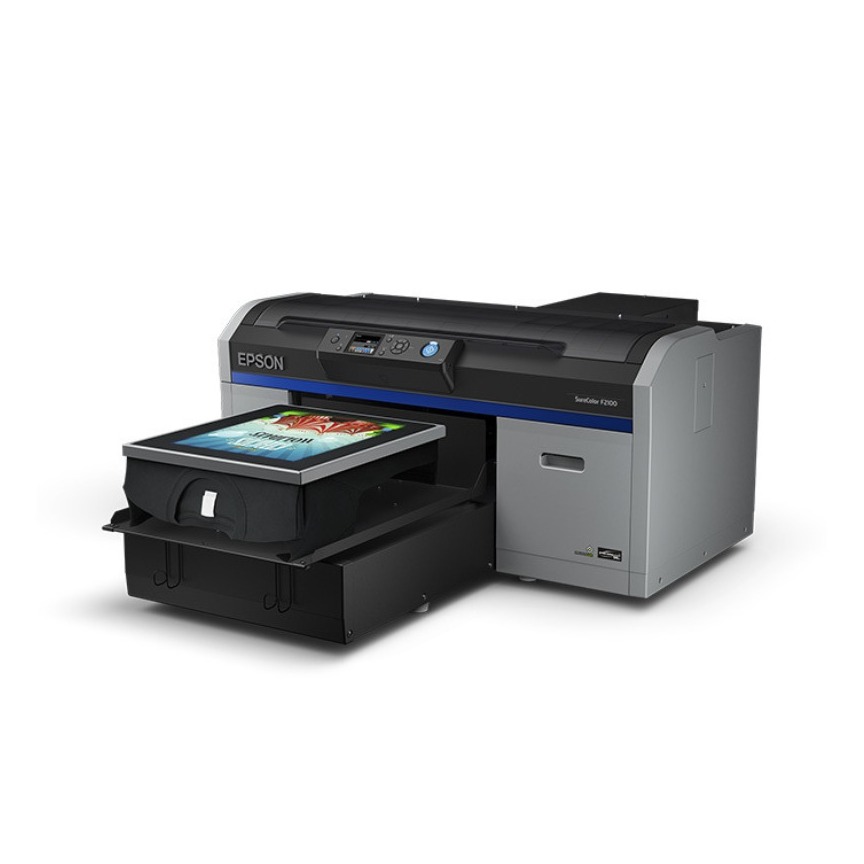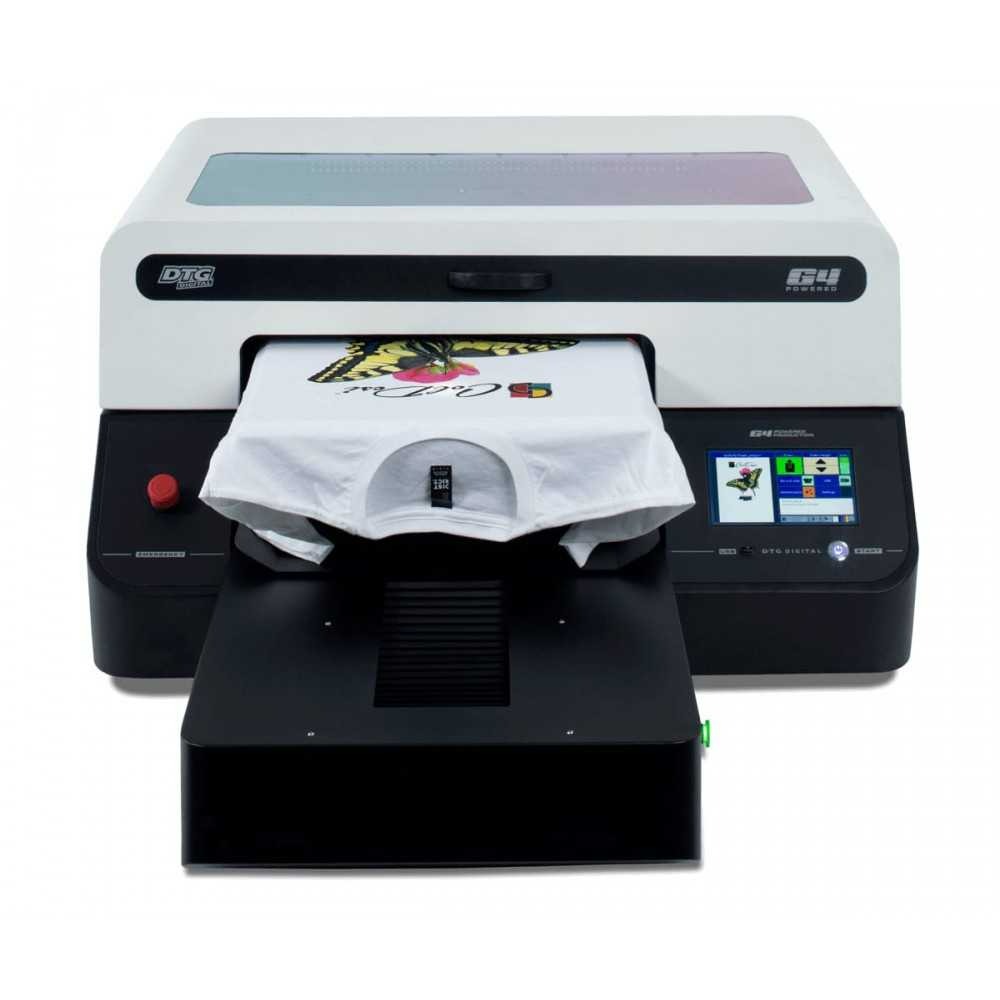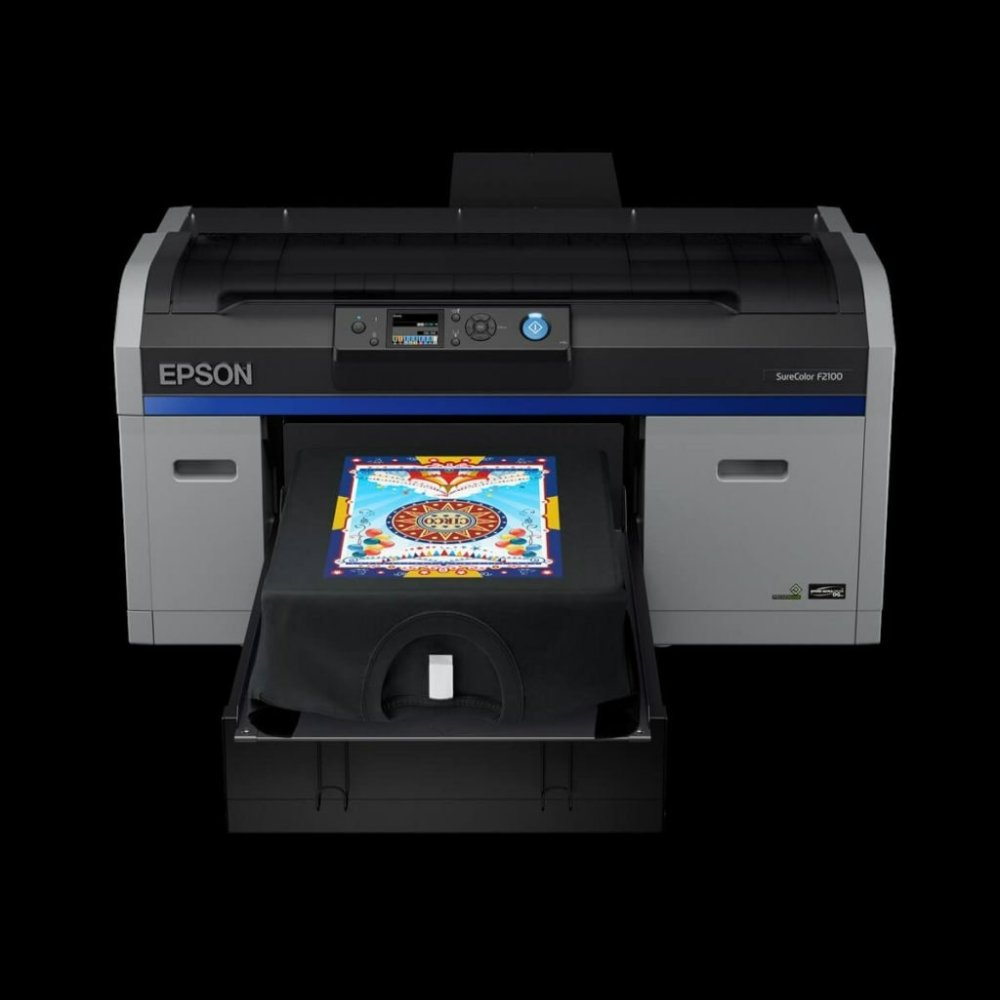Introduction to DTG Printing
Direct to Garment (DTG) printing is a method for printing on textiles. It works much like a paper printer. Instead of paper, the DTG printer works on fabric. It prints designs directly onto clothing. This technology has gained popularity. It allows high-quality prints with detail and color variety.
DTG printing is ideal for small to medium batch orders. It is a good fit for custom designs that change often. With this method, you can print images with complex colors. It is very efficient. You can quickly switch between different design orders. There is no need for setup time between prints.
This printing method uses specialized aqueous ink jet technology. The inks are absorbed by the fibers of the garment. This results in durable and detailed prints. Printers designed for DTG use different inks. These inks are formulated to print on various fabric types. They also need to be suitable for the printer’s ink delivery system.
When choosing a DTG printer, think about the type of garment. Also, consider print quality and production needs. Other factors include maintenance requirements and the overall cost. A good DTG printer can boost your business. It can increase your production capacity and print quality.
In the next sections, we will discuss selecting the right DTG printer for your needs. We will also cover artwork preparation, pre-treatment, print quality optimizations, maintenance, and more. These tips will help you make the most of DTG printing technology. They will ensure you produce top-quality prints every time.

Selecting the Right DTG Printer
Choosing the right DTG printer is crucial. It can affect your print quality and workflow. Key factors include the type of garment and your production volume. A suitable DTG printer matches these with its features.
First, think about the fabrics you will print on. Different inks pair with different materials. Make sure the printer you choose can handle your range of fabrics. Next, consider the print quality you need. High-resolution prints require printers with advanced capabilities.
Your production size matters too. For small batches, a basic printer may suffice. Yet, for larger orders, you’ll need a faster, more robust model. This can reduce waiting times between prints. It also keeps your operations efficient.
Maintenance is another aspect to consider. Look for a printer with user-friendly maintenance features. This saves time and ensures consistent print quality. Lastly, think about cost. Balance the initial price with ongoing expenses. These include ink, maintenance, and possible repairs.
To sum up, choose a DTG printer that fits your fabric type, print quality, and production needs. Ensure it is easy to maintain and cost-effective in the long run. Such a printer can elevate your business and streamline your printing process.
Preparing Your Artwork for DTG Printing
Before you print your design on fabric, proper artwork preparation is vital. Start by choosing a high-resolution image. This ensures your design comes out clear and sharp. Next, adjust your design to match the printer’s color specifications. DTG printers use CMYK inks, not RGB like most digital designs, so convert your image accordingly.
Ensure your design has transparent backgrounds. This is essential for printing on colored garments. It prevents unwanted background colors from appearing in your final print. Also, keep in mind that DTG printing picks up fine details. So, double-check your artwork for any small errors or stray pixels.
If your design contains text, make sure it’s legible. Use fonts that are clear and easy to read. Check the spacing and alignment of your text elements. Remember to outline your fonts. Outlining converts text into graphics, so your design maintains its integrity across different software.
It’s smart to create your designs in vector format when possible. Vector graphics can scale without losing quality. This is important when printing on different sized garments. Finally, do a test print. A test ensures your design translates well from screen to fabric. It helps you catch any issues before running a full batch.
By carefully preparing your artwork, you set the stage for high-quality DTG prints. Quality artwork leads to impressive final products that satisfy your clients. Remember, the effort you put into preparation makes a difference in the printing outcome.

The Importance of Pre-Treatment in DTG Printing
Pre-treatment in DTG printing is a critical step. It ensures the fabric is ready for ink. Pre-treatment involves applying a special liquid to the garment. This liquid prepares the fabric’s surface. It helps the ink bond well with the fibers. Without pre-treatment, inks may not adhere properly. They can spread or wash out easily.
A key reason for pre-treatment is print longevity. It increases the durability of your prints. This means designs stay vibrant even after several washes. Pre-treatment also enhances color brightness. Colors appear more vivid on a well-prepared garment. Customers notice the difference. Better color and washability can lead to repeat business.
Another advantage is improved print consistency. Pre-treatment helps achieve the same quality across multiple garments. This uniformity is essential for large orders. It ensures all items in an order look the same. This reduces the chance of reprints due to quality issues.
To pre-treat effectively, apply the liquid evenly across the fabric. Use the right amount. Too much or too little can affect the print. Let the pre-treatment dry before printing. Follow the correct drying procedures. This can involve using a heat press. Proper drying is crucial to prevent ink from bleeding.
In summary, pre-treatment is a must for quality DTG prints. It ensures durability, color vibrancy, and consistency. Always follow the right pre-treatment process. This way, your DTG printer can produce outstanding results, every time.
Optimizing Print Quality: Key Settings and Adjustments
To get the best results from a DTG printer, it’s crucial to optimize the print quality. Here are key settings and adjustments to focus on:
- Resolution: Choose the highest possible resolution for crisp and detailed images. High dpi (dots per inch) settings ensure fine details and smooth gradients.
- Ink Saturation: Adjust the level of ink saturation. Too much ink can cause bleeding, while too little may lead to faded colors. Find a balance for vibrant, yet accurate prints.
- Print Speed: Faster printing can reduce quality. Opt for a slower print speed when detail is critical. This allows for better ink application and precision.
- Color Management: Calibrate your printer regularly. Use color profiles that match the printer and inks. This helps maintain color accuracy across different prints.
- Platen Height: Ensure the platen height is set correctly. The garment should be at the right distance from the print head. This prevents smudging and ink spray.
- Pre-treat Application: Check the pre-treatment level before every print. Even coverage is key for consistent quality.
- Test Prints: Always do a test run. This helps identify any issues with the settings before committing to a full batch.
By paying attention to these factors, you can achieve top-notch prints with every run of your DTG printer. Remember, consistency leads to satisfaction for your clients and repeat business for you.

Maintenance Best Practices for DTG Printers
Proper maintenance of your DTG printer is essential for optimal performance and longevity. To keep your printer running smoothly, consider the following best practices:
- Regular Cleaning: Wipe down the printer regularly to remove dust and debris. Pay special attention to the print heads and nozzles. Clean them as specified by the manufacturer to prevent blockages.
- Ink System Maintenance: Use the recommended inks and replace them before they dry out. Also, shake white ink cartridges to prevent pigment settling if your printer uses white ink.
- Software Updates: Keep the printer’s firmware and software updated. Manufacturers often release updates that enhance printer functionality and address issues.
- Replacement Parts: Inspect and replace any worn or damaged parts promptly. This includes wiper blades, dampers, and capping stations.
- Consistent Use: Regular use of your DTG printer can prevent ink from drying inside the nozzles. Print something every day, even if it’s just a nozzle check.
- Professional Servicing: Schedule annual check-ups with a certified technician. They can perform deeper maintenance tasks you might miss.
By following these simple steps, you can ensure your DTG printer remains reliable. You’ll also produce consistent, high-quality prints with every job.
Overcoming Common DTG Printing Challenges
DTG printing, like any technology, can present challenges. Knowing how to address them is key for smooth operations. Here, we outline common issues and solutions.
- Ink Clogging: Sometimes, ink may clog the printer nozzles. This leads to inconsistent prints. To prevent this, perform daily print head cleanings. Use the maintenance tools provided with your DTG printer.
- Color Matching: Getting the exact color on fabric can be tricky. Calibrate your printer often. Test your designs before a full run. This helps match colors more accurately.
- Fading Prints: Ink may fade after several washes. Ensure you properly pre-treat garments. Also, use high-quality inks designed for durability.
- Moisture Issues: Excess moisture from pre-treatment can cause ink to bleed. Allow the fabric to dry completely before printing. A heat press can speed up this process.
- Print Quality Consistency: To keep prints looking the same batch after batch, standardize your pre-treatment and printing processes. Keep a close eye on your printer’s settings.
- Garment Texture: Rough fabrics can disrupt ink adhesion. Choose smoother textiles for better print quality or adjust your equipment for textured garments.
Tackling these challenges head-on will enhance your DTG printing results. Remember, effective troubleshooting starts with understanding your DTG printer’s capabilities and limitations. Stay patient, be meticulous, and your efforts will lead to fewer print errors and happier customers.
Expanding Your Business with DTG Printing
Expanding your business with a DTG printer is an exciting prospect. It can open up new markets and increase your service offerings. When you start offering DTG printing, you can tap into trends quickly. This allows you to provide custom, on-demand prints to your clients.
Firstly, target niche markets with unique needs. These could be local sports teams needing jerseys or bands wanting custom merchandise. With DTG, small orders are cost-effective. This means you can cater to such groups without huge overheads.
Next, consider offering personalized products. Custom t-shirts, hoodies, and other apparels are popular. Use your DTG printer to create these items. Personalized goods can bring in higher profit margins. They also build customer loyalty.
Then, market your DTG services effectively. Use social media to showcase your work. Highlight the quality and detail of your DTG prints. Share customer testimonials. These can help draw in more business.
Remember, training your team is important. Teach them how to use the DTG printer efficiently. This will ensure high-quality outputs and satisfied customers.
Lastly, keep innovating. Stay updated with the latest DTG technology and techniques. Offer fresh and exciting print designs regularly. This keeps customers coming back for more.
To wrap up, use your DTG printer as a tool to expand your business. Target new niches, sell personalized items, market well, train your team, and keep innovating. Do these, and watch your business grow.